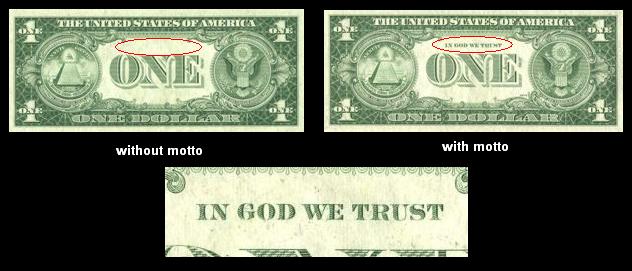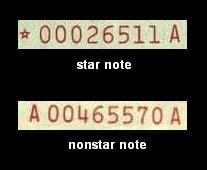Frequently Asked Questions
Anytime an individual sets out to learn information about a new field of interest there are always going to be questions that must be answered. The questions below are just a handful of the most common questions that people ask us. It is far from comprehensive and if there is something you would like to know that you don’t see here, then contact us with an email: admin@oldcurrencyvalues.com.
Why doesn’t my note say “In God We Trust?”
Why does my note have a big red R on it?
Why does my note have a big red S on it?
Why does my note have Hawaii printed on the front and back?
Why does my silver certificate have a yellow seal?
What is a Barr Note?
What is a Web Note?
What is a Mule Note?
What is a Star Note?
What is an Error Note?
What is a Mistake Note?
How Can I Find A Good Currency Dealer?
Why doesn’t my note say “In God We Trust?”
A lot of new collectors happen up on an old note and see that it doesn’t have “In God We Trust” on it and they think they have found a very significant error. The BEP did not start putting the phrase “In God We Trust” on notes until 1956, meaning that the 1935G $1 silver certificates still being printed then were the first to feature that phrase. So all notes printed from 1957 and later will have the now famous phrase.

Why does my note have a big red R on its face?
Why does my note have a big red S on its face?
In late 1932 the Bureau of Engraving and Printing began tested new combinations of materials to make up our paper money. The tests likely would have not been known to the public until June of 1944 when the BEP took it a step further and printed red Rs or Ss on the experimental issues. These overprints were on 1935A $1 silver certificates. The notes do command a premium, and due to that premium there are counterfeits out three. A legitimate note will be from one of the ranges below:
R – S70884001C – S72068000C
S – S73884001C – S75068000C

Why does my note have Hawaii printed on the front and back?
From 8/14/1942 until 10/21/1944 the only acceptable United States issued currency available for use in Hawaii were 1935A $1 silver certificates and 1934 and 1934A $5, $10, and $20 federal reserve notes from the San Francisco district. All of these notes had brown seals and serial numbers with the Hawaii overprint on the reverse. This distinction was made so that if a large amount of US money came into enemy hands that it could be devalued. These measures were of course a direct result of the attack on Pearl Harbor.

Why does my silver certificate have a yellow seal?
During World War II The United States issued notes especially for use by our troops in North Africa and Sicily. These notes are referred to as North Africa notes. They have a very pleasing yellow seal with everything else like a common silver certificate. They are far from uncommon and can easily be acquired in most grades for under $100.

What is a Barr Note?
A Barr Note is a nickname for the 1963B $1 Federal Reserve Note signed by Joseph W. Barr and Kathryn O’Hay Granahan. Barr was only the Secretary of the Treasury for 28 days, the shortest term ever. He signed from 12/23/1968 – 1/20/1969. Collectors tend to like the Barr notes because of the unique signing situation; however the notes themselves are far from rare.
What is a Web Note?
Web Notes or Web Press Notes were first printed for the 1988A $1 Federal Reserve Note series. The change to web press notes began in May of 1992 and ended in December of 1995. There is a lot to know about web notes; but simply put the notes were printed on both sides at once just like a newspaper, as opposed to back then front like normal.
What is a Mule Note?
A mule note is the designation given to a small size note that has mismatching plate number sizes. One plate number size has to be micro and the other macro to classify. Often times this variation leads to a premium demanded for the note by serious collectors.

What is a Star Note?
Some notes feature a star symbol at the beginning or end of the serial number. This star designates that the note is a replacement note. If while during the printing process a note incurs an error that makes it unfit to enter the commerce system, it is replaced with a star note. As a loose rule a star note is worth three times more than a regular note, however, that rule does not apply to low grade or especially common notes. (The serial number of the star note is not the same serial number as the replaced note.)

What is an Error Note?
What is a Mistake Note?
An error note or mistake note is a note that made it into circulation while having some kind of defect. The two most common errors are a result of printing mistakes or cutting mistakes. Error notes are very collectible. Due to that collectability they command a premium; and due to that premium there are many manufactured or counterfeit errors. It is usually easy for an expert to spot the fake, however the less than informed collector can easily be duped. Be careful when purchasing error notes.

